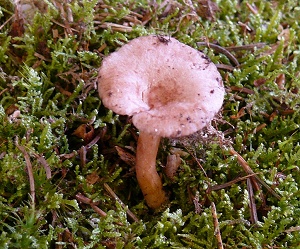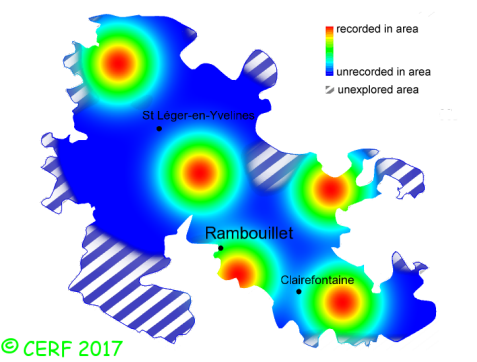| Lactarius lilacinus (Lasch:Fr.) Fr. |
|
|
|
|
|
|
The cap is vinaceous purple pink to lilac, convex-flattened then depressed, sometimes umbonate when young; its margin is smooth, very inrolled when young. The cap surface is smooth, velvety to fluffy. The stem is pinkish-ochre then orange-ochre, more or less cylindrical, without ring. The flesh is whitish to pale ochre, unchanging or turning grey-green slowly when exposed to air; its taste is mild to slightly bitter or hot; the odour is faint, of fenugreek, pelargonium, or chicory (dried); its texture is grainy (breaking like a chalk stick), exuding when cut a whitish to watery scarce milk, turning very slowly to blue-grey. The gills are cream yellowish to ochraceous-cream, adnate to decurrent, rather distant (nb of gills per 90° ~ 14 ). The spore print is white. This species is mycorrhizal. It grows in very wet places : marshlands, forest streams, on a rather acid to neutral soil, exclusively with alder. The fruiting period takes place from July to November.
Chemical tests : flesh becoming dark greenish grey when in contact with potash, dark blue reaction to ga´ac. Distinctive features : purple-pink to lilac, downy cap; watery milk, unchanging; gills slightly distant; in wet places, with alder Lactarius lilacinus is quite rare and localised in the forest of Rambouillet, and is infrequent, more generally speaking . | ||
|
page updated on 14/01/18

